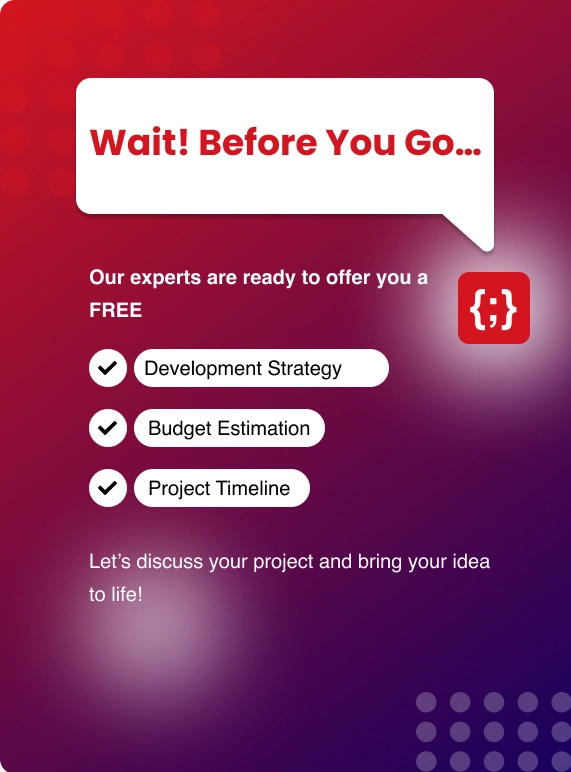Today, when it comes to finding a react native local database, you will get various options popping up. But as a developer, you have the responsibility to develop a mobile app that offers high performance and works without or weak internet. Ergo, it's your responsibility to ideal technology stack and database.
To make your work easier, we have compiled the list of top react databases to let you compare the drawbacks and benefits before considering the one for your app.
Let's understand one by one!!
Factors To Consider While Choosing A Database For React Native Development
MEMORY MANAGEMENT:
If the mobile app data are not managed properly, app crashing chances increase, although mainly databases clear cache after a particular time interval to ensure memory availability for better app performance.EASE OF USE:
It is critical to select a react native database that can be integrated with relatively little effort. This will assist you in speeding up the development process and making the developers' jobs much easier.CONCURRENCY:
If you develop a mobile app, you always want it to be popular, right! Well, to do database plays an important role, and once the app becomes popular among users, developers' responsibilities increase as they have to manage the massive database.There will be several requests from users, and it will become extremely difficult to provide them with precise amounts of data. As a result, before choosing the best database for react native, you must thoroughly understand the concurrency methodology used by the various React Native local databases.
THE COMPLEXITY OF DATA:
Most apps store their data in key values or JSON structures. Ergo, selecting a database that can handle complex data structures such as objects or full documents is critical.OFFLINE DATA SYNCHRONIZATION:
Users always look for apps that can be used offline or at the time of low internet connection. Thus, it has become essential to integrate data that allow synchronization after connecting to the internet.DATA CONFLICTS:
Adding additional features sometimes leads to data conflicts, and selecting the database for your react app with conflict management policies is best to consider.
While hiring developers for app development using react native, consider these factors and select the right database as it will make the development process easier and faster.
Leading Local Databases for React Native Development
1. REALM DATABASE
The Realm was launched in 2004 to ease development and help developers with mobile applications faster. It is a cross-platform, open-source, object-oriented database used in mobile and website development.
Realm Database constitutes two components Realm database and Realm object server. These elements work together to automatically synchronize data, allowing for a wide range of use cases, from offline applications to complex backend integrations.
Realm has its own search engine, and it demands nothing. Even object-related mapping or key-value stores are not required. The objects stored are allowed to access numerous threads or sources.
In addition to this, Realm delivers database solutions for JavaScript, Java, Kotlin, Obj-C, Swift, and .NET languages.
BENEFITS OF THE REALM LOCAL DATABASE IN REACT NATIVE DEVELOPMENT
● It is easy to use
● As compared to SQLite, it is 10x faster in developing an app
● It is known for building better apps
● All documents related to Realm are correctly written, and experts can find answers on the official website if required.
● Object conversion is handled well
● The Realm database is offline friendly with Redux offline.
● Lower experience latency & server bills
● It offers Cross-platform support.
● Best for creating and storing data on the fly.
● It has a rich set of APIs.
DRAWBACKS OF THE REALM DATABASE
● APK size gets bigger, and RAM utilization increases.
● You cannot auto-increment values.
● Restrictions on Model classes.
● You cannot access the database from separate processes at the same time.
2. SQLITE
Are you looking for a grounded and designed database for your react-native app development? Well, the SQLite database is the one. It is an RDMS (relational database management system) for solving the mobile app's storage requirements.
The term SQLite where Lite described as lightweight, meaning the database is lightweight and requires minimal setup, database administration, and resources.
Furthermore, it allows you to write the content into different files directly and does not require a server separately. The data stored in the form of plain text format can be encrypted using the SQLite Encryption Extension (SSE).
BENEFITS OF THE SQLITE LOCAL DATABASE IN REACT NATIVE DEVELOPMENT
● It is portable and easy to use.
● SQLite allows you to save data in the cross-platform database file.
● It is pre-installed on Android and iOS already.
● Offers TCL integration
● It is cost-effective and can be updated using the concise SQL queries
● SQLite database is easier to recover if it gets lost
● It executes almost all SQL standards.
DRAWBACKS OF THE SQLITE DATABASE
● SQLite has a size limitation of up to 2GB max in many cases.
● The maximum database size it supports is 140 TB
● It does not support access to multi-client concurrency.
● It handles low to medium traffic HTTP requests.
3. FIREBASE
Firebase is owned by Google and supports a NoSQL database. It can manage MVC-based react native apps that require a high database. And if you want to develop an app that requires offline updation of data and synchronization, Firebase is the ideal choice.
Moreover, it has a tool that tracks performances to help you detect the bugs in your app, and you have access to remove the data anytime from the Google server. It is highly compatible with SOX regulations which makes it best for the finance and banking industry.
BENEFITS OF THE FIREBASE LOCAL DATABASE IN REACT NATIVE DEVELOPMENT
● Combining different apps is easier with Firebase.
● It enables data synchronization on various platforms.
● It is easy to set up and offers excellent security.
● It provides offline access to users.
● Brilliant documentation
● Fast Prototyping
DRAWBACKS OF THE FIREBASE DATABASE
● It offers limited support to iOS Features
● It does not work in countries that do not allow Google
● Firebase leads to data migration issues
● Realtime synchronization issues.
● You cannot predict its pricing as you need to stick to only one vendor.
● In Firebase, there is no access to query for more than one key at a time.
Also Read: SQL VS NoSQL: Top 10 Head-to-Head Comparisons
4. WATERMELON DB
It is another react-native database like SQLite. Watermelon DB can precisely scale million of records without losing its speed within a minute. It is a database that must be considered for react native app development due to its ability to handle data persistence on slower devices which is a daunting task using lazy strategies.
According to Github, it is used to create demanding apps that focus on real-world performance.
BENEFITS OF THE WATERMELON DB IN REACT NATIVE DEVELOPMENT
● It enables static typing with the flow
● Data plugging into components is relatively easy.
● It enables an offline-first system by engine synchronization
● It renders UI automatically after modification in the database.
● Allows app development on SQLite foundation.
DRAWBACKS OF THE WATERMELON DB
● You need to create your backend to sync data.
5. POUCHDB
PouchDB is an open-source and lightweight javascript database that stores data in JSON format and enables all read, delete, update and create functions using JS API.
When using the app offline, it stores data locally, and then later, after getting a proper internet connection, the data is then synchronized with servers and CouchDB.
It also offers replication features to sync data with multiple clients without any data loss. Moreover, it is best when it comes to data security.
BENEFITS OF THE POUCHDB LOCAL DATABASE IN REACT NATIVE DEVELOPMENT
● It enables data synchronization with any supported server
● PouchDB is made up of using CouchDB protocols and thus offline and online capacities.
● With PouchDB, data replication is possible
● It supports SSL, meaning developers can seamlessly encrypt data with AES256.
DRAWBACKS OF THE POUCHDB DATABASE
● There is no drawback of Pounch DB discovered.
6. VASERN
Vasern is known for its fast, open-source, and lightweight features and was developed using Golang s server-side language by Google. Its API is used to create local data, cloud storage, and syncing across the app’s clients. Vasern design and structures got motivation from various open-source databases.
BENEFITS OF THE VASERN LOCAL DATABASE IN REACT NATIVE DEVELOPMENT
● It is an open-source database.
● It is fast and enables developer-friendly end-to-end database synchronization.
● Concentrate on performance and consistency.
DRAWBACKS OF THE VASERN DATABASE
● You cannot fix an issue on server.
7. BERKELEYDB
Berkeley DB is a publically available, high-performance React Native backend platform that enables developers to manipulate data differently. It has an API for different languages, including iOS and Android.
It can handle data in various ways, including relationally, as SQLite does, or byte arrays, and it supports numerous data items for a single key.
BENEFITS OF THE BERKELEYDB IN REACT NATIVE DEVELOPMENT
● BerkeleyDB is an open-source database.
● It is an embedded database as it operates in the app's memory space.
● It offers a portable library.
● Supports high-intensity concurrent processes
● Offers accessible data access services
DRAWBACKS OF THE BERKELEYDB
● Most of the devices do not fulfill the requirements of the network share
● It is more sensitive to interruptions than a normal relational database system
● Architectural Limitations
A Quick Review

Wrapping Up
Thus, if you are considering developing an app, look for companies that offer react native app development services and decide the required features and database with them.


.webp?lang=en-US&ext=.webp)

.webp?lang=en-US&ext=.webp)

